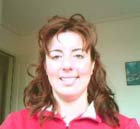Contents: 2024 | 2023 | 2022 | 2021 | 2020 | 2019 | 2018 | 2017 | 2016 | 2015 | 2014 | 2013 | 2012 | 2011 | 2010 | 2009 | 2008 | 2007 | 2006 | 2005 | 2004 | 2003 | 2002 | 2001
2009, 14
Computational fluid dynamics modeling of the combustion noise (roar) in attached-lifted propane jet diffusion flames and comparison of the numerical results
language: English
received 15.09.2009, published 12.11.2009
Download article (PDF, 400 kb, ZIP), use browser command "Save Target As..."
To read this document you need Adobe Acrobat © Reader software, which is simple to use and available at no cost. Use version 4.0 or higher. You can download software from Adobe site (http://www.adobe.com/).
ABSTRACT
The autonomous noise generation by the turbulence interactions, heat release and chemistry fluctuation in front of an attached propane jet diffusion flame was investigated numerically. In the computational procedure the Large Eddy simulation turbulent model (LES) was employed to calculate the reacting jet flows. A reactedness-mixture fraction two-scalar exponential probability density function (PDF) model based on non-premixed flame arguments was used. The preliminary results of the computational fluid dynamics model (CFD) suggest that the location of the maximum noise intensity coincides with the region of the peak temperatures levels. The lifted flame gives elevated energy content in the sound spectrum than the attached one and the difference in the noise level is about 40 dB at most frequencies and mostly near the frequency 80 Hz. The present methodology has been certificated through a series of experimental measurements and a reasonable agreement was observed. It is believed that the present procedure has captured the basic behaviors and trends in the aero-thermochemical and flame noise generation characteristics, of the studied jet diffusion flames, although further tests and improvements would be required to enlarge the applicability of the method.
Key words: combustion roar, attached flame, autonomous noise, sound spectrum, turbulent combustion modeling.
13 pages, 7 figures
Сitation: Panagiota Marazioti. Computational fluid dynamics modeling of the combustion noise (roar) in attached-lifted propane jet diffusion flames and comparison of the numerical results. Electronic Journal “Technical Acoustics”, http://www.ejta.org, 2009, 14.
REFERENCES
1. Lighthill, M. J. On sound generated aerodynamically. I. General theory. Proc. Roy. Soc, A 211, 564-587, 1952.
2. Klein, S. A. and Kok, J. B. W. Sound generation by turbulent non-premixed flames. Combustion Science and Technology, vol. 149, 1999.
3. Singh, K. K., Frankel, S. H. and Gore, J. P. Effects of combustion on the sound pressure generated by circular jet flows. Journal of American Institute of Aeronautics and Astronautics, 41, 319-321, 2003.
4. Singh, K. K., Frankel, S. H. and Gore, J. P. Study of spectral noise emissions from standard turbulent non-premixed flames. Journal of American Institute of Aeronautics and Astronautics, 42, 931-936, 2004.
5. Klein, S. A. On the acoustics of turbulent non-premixed flames, PhD thesis, University of Twente, Enschede, The Netherlands, 2000.
6. Brick, H., Piscoya, R., Ochmann, M. and Koltzsch, P. Modelling of combustion noise with the Boundary Element Method and Equivalent Source Method. Internoise-2004.
7. P. Boienau, Y. Gerrais and V. Morice. An aerothermoacoustic model for computation of sound radiated by turbulent flames. Internoise-96, 495-508, 1996.
8. Chen, M., Herrmann, M. and Peters, N. Flamelet modelling of lifted turbulent CH4/air and C3H8/air jet diffusion flames. Proc. Comb. Inst., 28, 167, 2000.
9. P. Koutmos. Damkohler number description of local extinction in turbulent methane jet diffusion flames. Fuel, 78, 623-626, 1999.
10. Schneider, C., Dreizler, A., Janicka, J. and Hassel, E. Flow field measurements of stable and locally extinguishing hydrocarbon-fuelled jet flames. Combustion and Flame 135, 185-190, 2003.
11. Kempf, A., Sadiki, A. and Janicka, J. Prediction of finite chemistry effects using large-eddy simulation. in Proc. Comb. Inst. 29, 2002.
12. P. Koutmos, C. Mavridis and D. Papailiou. Time-dependent computation of turbulent bluff-body diffusion flames close to extinction. International Journal of Numerical Methods for Heat and Fluid Flow, 9, 39-59, 1999.
13. Koutmos, P. and Marazioti, P. Identification of local extinction topology in axisymmetric bluff-body diffusion flames with a reactedness-mixture fraction presumed probability density function model. International Journal for Numerical Methods in Fluids, 35, 939-959, 2001.
14. Meier, W., Barlow, R., Chen, Y. and Chen, J. Raman/Rayleigh/LIF measurements in a turbulent CH4/H2/N2 jet diffusion flame: Experimental techniques and turbulence-chemistry interaction. Combustion and Flame 123, 326-343, 2000.
15. Marazioti P. An aerothermoacoustic model for computation of the combustion noise (roar) radiated by lifted turbulent jet diffusion flames. Electronic journal “Technical Acoustics”, http://www.ejta.org, 2009, 8.
16. T. Echekki and J. H. Chen. The effects of complex chemistry on triple flames. NASA CTR manuscript, Proceedings of the Summer School, 217-233, 1996.
17. D. Papailiou, P. Koutmos, C. Mavridis and A. Bakrozis. Simulations of local extinction phenomena in bluff-body stabilized diffusion flames with a Lagrangian reactedness model. Combustion Theory and Modelling, 3, 409-431, 1999.
 |
Panagiota Marazioti did her Master's of Philosophy Degree (MPhil), in “Aerodynamic Noise Prediction in Rotating Machinery” in the School of Mechanical Engineering at Cranfield University (UK). After finishing her PhD in the Department of Mechanical and Aeronautical Engineering, at the University of Patras she started her career in that department. Later on she joined the Department of Energy Technology, in Technological Educational Institute of Athens, Greece as a visitor professor (with convention). She is working on combustion (roar) noise and air pollutants prediction and control (active control…), measurement techniques, data processing and analysis. She has published papers in International journals in this field. e-mail: emaraziot(at)upatras.gr |
